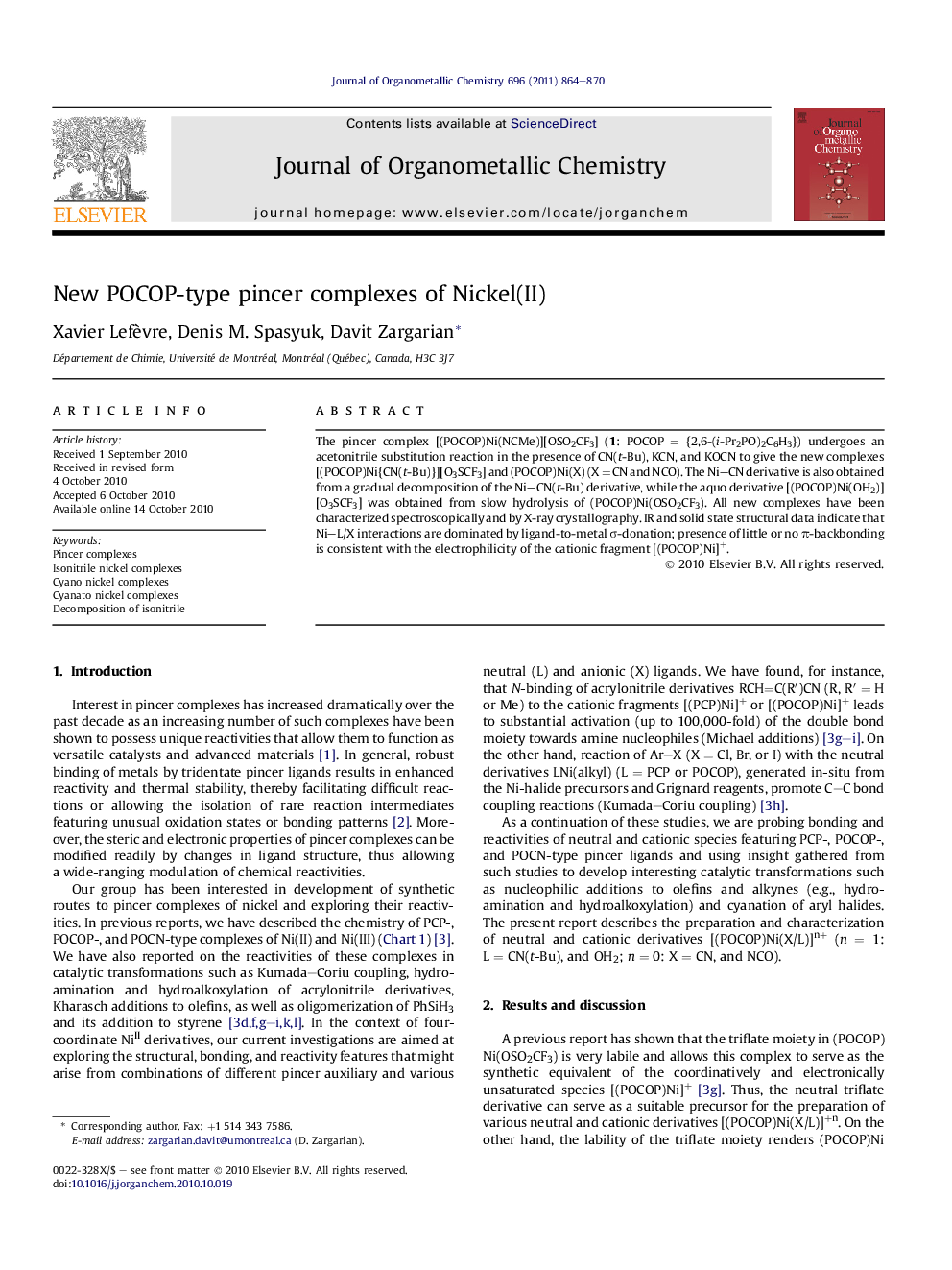| Article ID | Journal | Published Year | Pages | File Type |
|---|---|---|---|---|
| 1324764 | Journal of Organometallic Chemistry | 2011 | 7 Pages |
The pincer complex [(POCOP)Ni(NCMe)][OSO2CF3] (1: POCOP = {2,6-(i-Pr2PO)2C6H3}) undergoes an acetonitrile substitution reaction in the presence of CN(t-Bu), KCN, and KOCN to give the new complexes [(POCOP)Ni{CN(t-Bu)}][O3SCF3] and (POCOP)Ni(X) (X = CN and NCO). The Ni–CN derivative is also obtained from a gradual decomposition of the Ni–CN(t-Bu) derivative, while the aquo derivative [(POCOP)Ni(OH2)][O3SCF3] was obtained from slow hydrolysis of (POCOP)Ni(OSO2CF3). All new complexes have been characterized spectroscopically and by X-ray crystallography. IR and solid state structural data indicate that Ni–L/X interactions are dominated by ligand-to-metal σ-donation; presence of little or no π-backbonding is consistent with the electrophilicity of the cationic fragment [(POCOP)Ni]+.
Graphical abstractSubstitution of coordinated acetonitrile in the pincer complex [(POCOP)Ni(NCMe)][OSO2CF3] allows the facile preparation of the new derivatives [(POCOP)Ni{CN(t-Bu)}][O3SCF3] and (POCOP)Ni(X) (X= CN and NCO). The Ni-CN derivative is also obtained from a gradual decomposition of the Ni-CN(t-Bu) derivative, while the aquo derivative [(POCOP)Ni(OH2)][O3SCF3] was obtained from slow hydrolysis of (POCOP)Ni(OSO2CF3).Figure optionsDownload full-size imageDownload as PowerPoint slideResearch highlights► Synthesis and characterization of new nickel pincer complexes. ► Spontaneous conversion of a Ni-isonitrile derivative to a Ni-cyanide derivative. ► N-binding (as opposed to O-binding) of cyanate ligand to nickel;. ► Ni-ligand interactions in complexes (POCOP)Ni–L is primarily σ-type.
